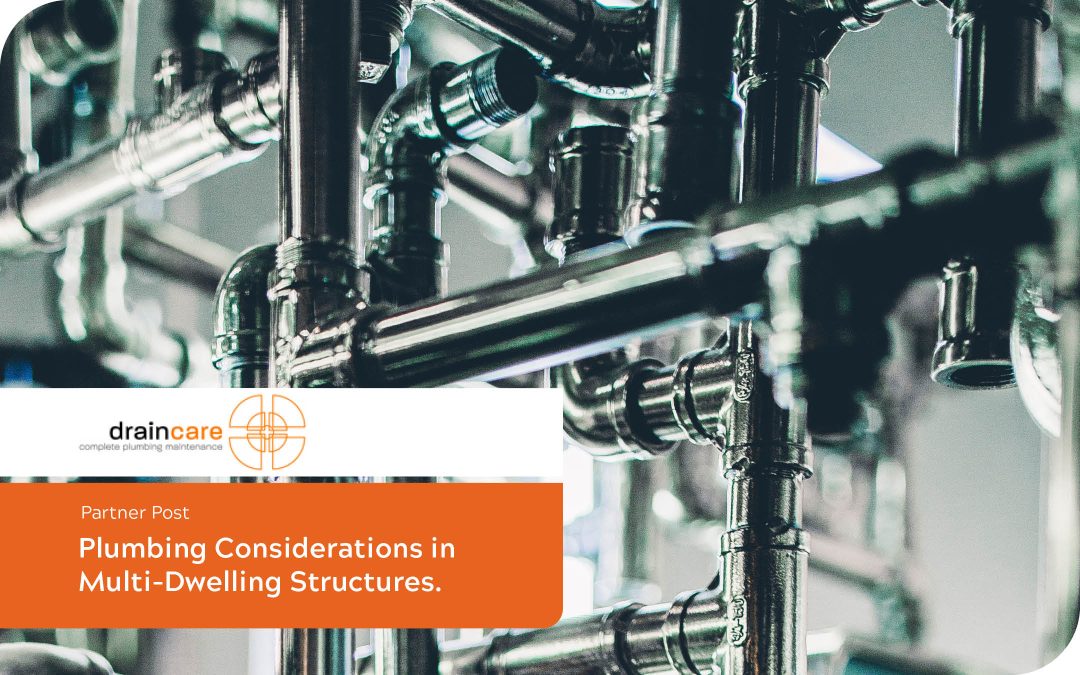When it comes to the plumbing requirements of various dwellings, their layout often dictates how the pipework is run. Some designs call for pipework to be hidden within voids incorporated into the design of the floor plan. For drainage, this may see numerous bathrooms situated above each other, with a riser duct concealed inside an adjacent wardrobe or cupboard, and the kitchens featuring a boxed-out bulkhead containing the vertical drainage pipework within. In most instances, the hot and cold water pipework can be run within these areas as well.
The term “common pipework” normally relates to these pipe systems shared by multiple tenancies. Where they branch off and run to each dwelling is normally termed as “individual” or “private” pipework. This pipework is obviously installed way before the buildings are finished and are almost completely covered from view. Often, establishing the source of leaks from these pipes involve the cutting of holes in various areas to allow access to view and repair. Normally, for drainage, private pipework commences from the connection of each internal fixture until it connects to the common pipework system. So, a leaking bath waste, basin or kitchen sink trap is not termed to be any more than a private issue to fix. Leakage determined to be sourced within the common riser void areas often broadens the definition towards a common pipework issue. Water pipework is often determined to be private from the main stop cock inwards for each dwelling. In most situations, the cold water stop cock itself is considered the responsibility of the body corporate, as well as the main pipework running to them.
It is important to know where the water turns off for each unit for emergency and maintenance situations. When these dwellings are tenanted, it is highly recommended that the tenants or property manager are informed as to where these are located. This information can save valuable time in the event of a burst pipe or leak that may see other tenancies affected.
Another issue that continues to surface is the sounds of banging pipes, or water hammer. As mentioned, the close proximity of other units sees the main pipework shared and run nearby, with complaints referring to noticeable noises heard when other units are using water. This is not considered to be a body corporate issues most cases, as it is not the fault of the pipe system. Most water hammer complaints can come from the use of a dishwasher or washing machine when the water is filling, or mixer taps are turned on or off suddenly. Some shuddering noises have also been reported, and even creaking or thudding. The use of copper water services are the most common pipe systems associated with these noises due to the conductive nature of a metal-based pipe material.
Water hammer is often traced to the internal thudding of a “normally open” tap, such as a toilet, dishwasher or washing machine. Older tap designs still feature a traditional washer that is held open by mains pressure. The sudden closing of a flowing fixture can see this valve drawn away from its open position, then thrust back when the open flow stops, transferring the noise through the pipe system. Any other valve that has internal moving parts can also do the same thing after a flow event stops suddenly, such as hot water valves. If detected as so, it is normally the responsibility of the owner to address this issue within the unit. This can be a simple change of taps to a 1/2-turn design that have no internal moving parts or changing worn hot water valves with new. Otherwise, installing a water hammer arrestor anywhere internally can assist as well.
From a Body Corporate perspective, there are limited ways to help in this situation. If there are any clear areas where the main cold water supply pipework is exposed, installing a water hammer arrestor where possible is considered one of very few options. Older stop cocks that supply each unit also have an internal washer, and these may be able to be “pinned” to prevent this washer from moving as a last resort. This would normally be supplied with a new spindle and washer to renew the service life of the tap. And as usual, the location of this tap determines the ease of these works.
